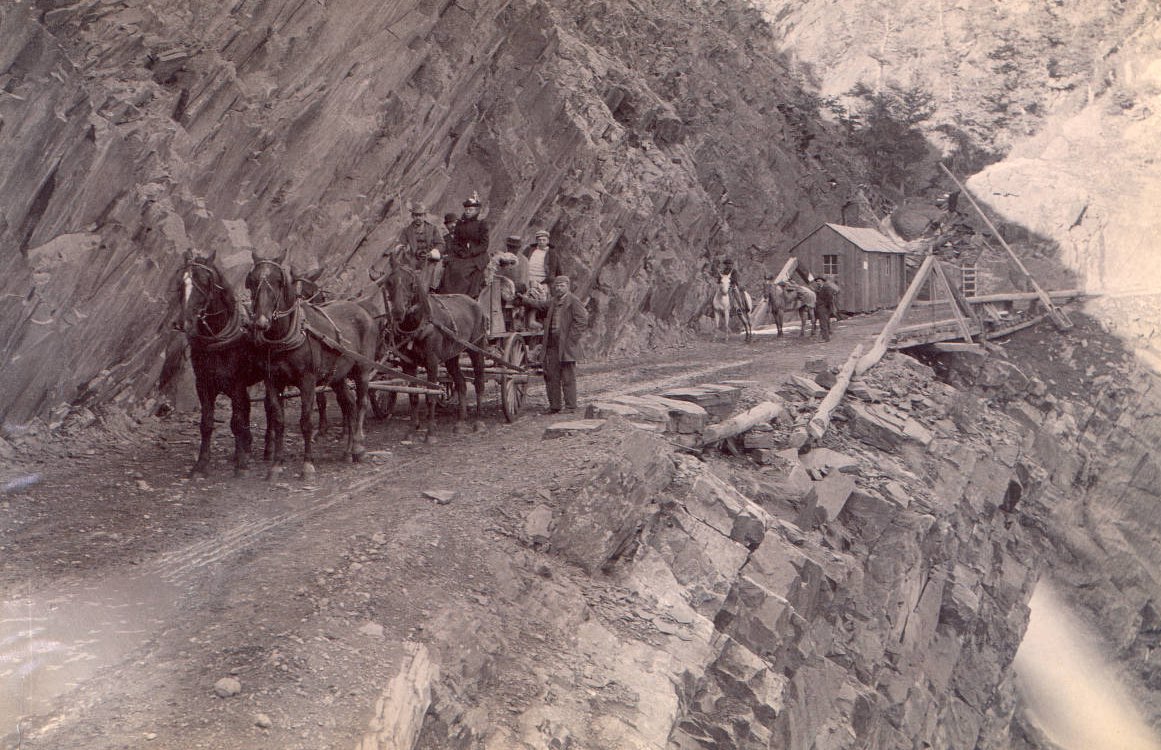Established in 1876, Ouray, Colorado was positioned at the north end of the rugged San Juan mountains, in a box canyon that served as the gateway to many rich mining districts. The town would have been the ideal commerce and transportation center for a large part of the region of not for one problematic detail.

The terrain that separated Ouray and the mining districts to the south was so steep and rocky, that early explorers called the route “difficult and dangerous” and even “impassible”. Early trails and toll roads that linked Ouray with important mining centers like Lake City and Silverton took long and roundabout routes that made travel in the region slow and difficult.

For years attempts were made at building a road between Ouray and Silverton, but these attempts were always a failure.
Interest in the road peaked in 1882 with the discovery of the Red Mountain Mining District, the largest mining boom the San Juan’s had experienced to that point. Building the southern road out of Ouray now became a matter of great importance.

If Ouray could not be connected to the fantastic mines of Red Mountain it would lose all the commerce and riches flowing out of the district to Silverton.
Reaching the mines of Red Mountain became a race between Ouray and Silverton. The stakes were high, with the winner being the first to benefit from the extensive freighting business that would come from the rich new district.

Ouray County took on the job and the first concerted effort was made at building Colorado’s most difficult road. Over $40,000 was spent but not much progress was being made, and the county had to concede that it did not have the resources or expertise to get the job done.

Ouray County officials then turned to famed Colorado road builder Otto Mears. Mears had built successful toll roads in the San Juans before, and was considered to be Colorado’s greatest road builder.

By the fall of 1883, Mears had completed the road from Ouray to Ironton, beating the Silverton road builders in the race to access the new mining district. As expected, freighting business boomed in Ouray, and the town entered a new era of prosperity.

Mears was a shrewd businessman and after completing the road from Ouray to the Red Mountain district, he then made an offer to county officials in Silverton to finish their end of the road. The Silverton road had been mostly built but was in such poor condition that freight wagons could not make the trip without great difficulty.

In a similar deal to the one he made with the county government at Ouray, Mears got San Juan County to pay for the road and let him collect the tolls that travelers had to pay to use it.

Mears now controlled both roads to Red Mountain, and charged high tolls in either direction. In addition to the payments he received from the county governments, Mears is said to have collected over $100,000 on tolls

It wasn’t just mines that were bringing prosperity to Ouray. The spectacular scenery of the San Juan’s attracted tourists as early as the 1880s, and the new toll road featured such breathtaking scenery that it boosted tourism in the region despite the terrifying drops and rough condition of the road.

Mear’s charter to collect tolls ended in 1887 with Ouray and San Juan counties taking over ownership. The Mears road was now public, and would continue to be one of the West’s most famous roads.

The 1916 passage of the “Good Roads Bill” provided funds that were used to improve roads throughout America. Starting in 1921, these funds were used to upgrade the Mears toll road to a highway that could accommodate automobiles.

For reasons that remain unclear, the newly upgraded automobile road became known as the “Million Dollar Highway”, which it is still known as today. Most would agree that the Million Dollar Highway is America’s most spectacular drive.

The road remains a testament to the bravery and ingenuity of men like Otto Mears and the hundreds of laborers that blasted much of this road from the shear cliffs of the San Juan mountains.

Heavy Freight Wagons
Freighting in the West was one of the most essential jobs, yet it is rarely talked about today. Heavy Freight Wagons of the American West examines the men, wagons, and animals that provided this important service to frontier mining towns.
Incredible Photos of Colorado Mining Scenes
Colorado’s spectacular scenery and the richness of the state’s mines attracted many of the top photographers working at the time. These are some of the most incredible mining scenes from the state of Colorado: Incredible Photos of Colorado Mining Scenes

